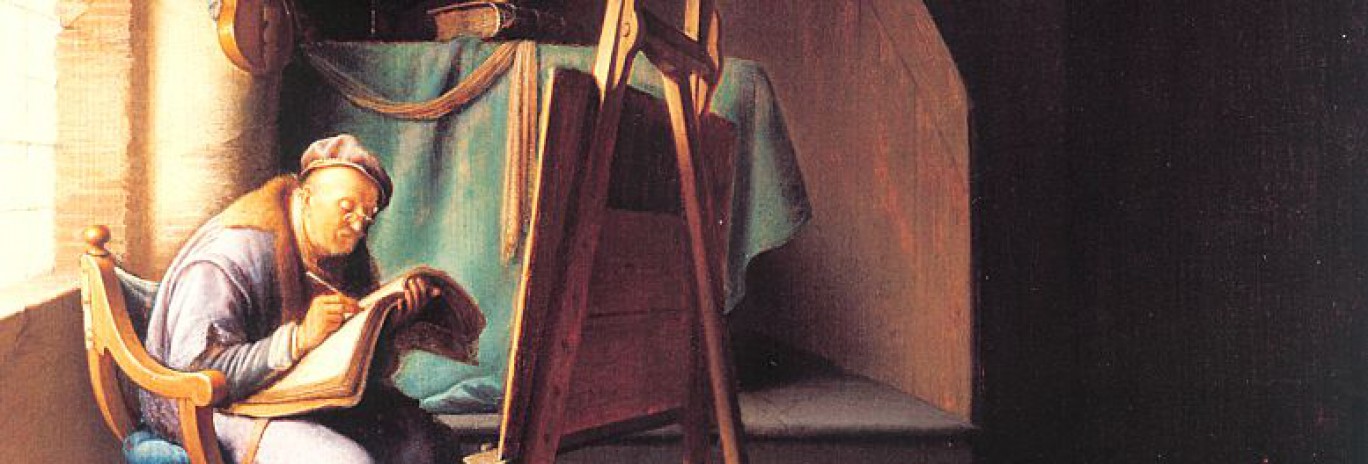Making of Technique
The Making of Technique in the Arts: Concepts and Practice from the Sixteenth to the Twentieth Century
The terms ‘technique’ and ‘technical’ are used widely in relation to art, art history and science today, both to refer to the technical analysis of artworks and to a more holistic analysis of creative processes. Yet we do not have a history of the shifting meanings of the term ‘technique’ in the arts and sciences. The word ‘technique’ was a neologism in the vernacular, and started to appear in treatises on arts and sciences from the middle of the eighteenth century. Rooted in the Greek techne, which was translated routinely as ‘art’ until the mid-eighteenth century, technique referred to processes of making or doing and their products. Such processes had been described to previously as ‘art’, ‘methods’, ‘manners’ or ‘mechanics’ in the vernacular, and they were recorded in text with the intention of documenting and/or transmitting practical skills and knowledge.
This workshop aimed to bridge the gap between the changing concept of technique and the practices currently described by it. Questions we sought to answer were for example: how was what we now call ‘technique’ in the arts and sciences described and understood before the term took hold? More specifically, how were techniques in the arts described between 1500 and 1900? What kind of written sources can we distinguish, which terms were used to describe and instruct technique in various languages, and who were the intended audiences of these works?
Moreover, we looked at the linguistic history of technique in the arts, with questions such as why the term ‘technique’ first emerged around 1750, and what did it mean initially to artists, art theorists, and natural philosophers? Is there a connection with the emergence of categories such as aesthetics, fine art, craft, mechanics, and technology? Did the meaning of ‘technique’ and related concepts vary between periods, practices, and European languages, and how can we use data and concept mining to understand this? What do we mean by ‘technique’ in relation to art now, and can we use the same word to describe historical knowledge and practices? A selection of the papers presented during this part of the workshop, combined with other contributions, will form the basis for an edited volume (eds. Sven Dupré and Marieke Hendriksen), due to appear in 2020.
Somatic language to describe measurements and sensory characteristics of materials traditionally played an important role in technical art texts, but seems to become rarer or more standardized over time. This kind of language guides the reader’s posture, as well as the use of their own body, and tools and materials, yet it is often unspecific and metaphorical (‘shift your weight’, ‘a handful’, ‘like yoghurt’), and meanings and interpretation can vary wildly in different languages, times, and cultures. How did the use of this kind of somatic language change in Europe between 1500 and 1950? What was the influence of standardization on conservation practices? The papers from the somatic language panel will appear as a special issue of ArtMatters: the International Journal for Technical Art History in 2019.
During the workshop, we discussed these and related questions through panels of specialists from a variety of fields, such as history, art history, intellectual history, philosophy, linguistics, and computer science. Each interdisciplinary panel focussed on a particular concept, but there was also ample time for exchange between the various panels.
Panel 1: Text and the Making of Technique in the Arts
How are techniques in the arts described between 1500 and 1950? What kind of written sources can we distinguish, which terms were used to describe and instruct technique in various languages, and who were the intended audiences of these works? Within these sources, are there particular categories of words, such as verbs and imperatives, that were used specifically by authors to direct the reader’s actions, and are there distinct differences between genres or periods? How were art technical texts with and without images valued over time?
Panel 2: Technique in the Arts: the Making of the Concept ‘Technique’
This panel focussed on the emergence of the term ‘technique’ in western European languages (German, Dutch, English, French, Spanish, Italian) in the period 1700-1950. How was what we now call ‘technique’ in the arts and sciences described and understood before the term took hold? Why did the term ‘technique’ first emerge around 1750, and what did it mean initially to artists, art theorists, and natural philosophers? Is there a connection with the emergence of categories such as aesthetics, fine art, craft, mechanics, and technology? When did the term ‘technique’ first emerge in different languages, and how did the contexts in which it was used vary?
Panel 3: The Body and the Senses in the Making of Technique
Somatic language to describe measurements and sensory characteristics of materials play an important role in technical art texts. They guide the reader’s use of their own body, as well as tools and materials, yet they are often unspecific and metaphorical (‘shift your weight’, ‘a handful’, ‘like yoghurt’), and their meaning and interpretation can vary wildly in different languages, times, and cultures. How does the use of this kind of somatic language change over time? Can we use knowledge about these changes in contemporary conservation practice? What was the influence of standardization on conservation practices, and how is somatic language in historical sources relevant for modern conservation practices?


